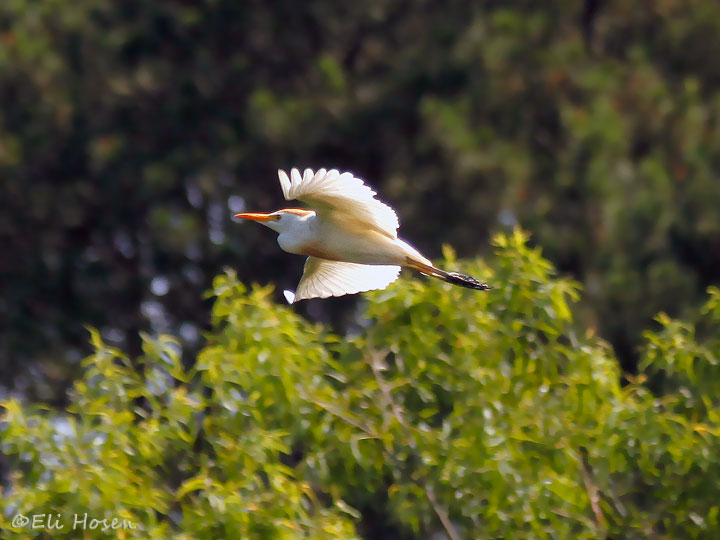
|
Cattle egret Cattle egrets are small birds that frequent roadsides looking for insects. Wherever they live, they follow and even ride on ungulates (generally cows and deer here in Virginia) to prey on the insects the large four-footed creatures attract. Scientists have calculated that the cattle egret can get 50% more food while expending only two thirds as much energy by following cattle and other ungulates. Ranchers do not object to their presence around the cattle—the birds control flies. The cattle egret is not a loner: when not foraging near cattle it can be found feeding and nesting near other wading birds. The cattle egret is at home in terrestrial or aquatic habitats. The birds are gregarious and non-competitive for food, but they do get aggressive during breeding season. When the female has chosen a mate, she will often land on his back during his display. Siblings are also aggressive with each other. Both sexes participate in nest building. Often the female will actually build the nest while the male brings material for her. They have been known to filch nesting materials from unwary neighbors. During the breeding season, both sexes perform a “greeting ceremony” when returning to the nest: they flatten their crest feathers and erect their back plumes. The birds are small, about 17 inches long; males and females are similar in appearance. During breeding season their white plumage becomes more colorful with orangey-buff feathers at the front of the neck, the back and the crown. For this reason, the cattle egret is also known as the buff-backed heron. The pale blue eggs, laid in a clutch of one to nine, take about 22 days to hatch. Both sexes incubate the young. In the nestlings’ first week after hatching they are shielded from the sun by the parents’ wings. Cattle egret are not native to the U.S., but rather to Africa and southern Spain. They are thought to have migrated from Africa to South America in the late 1800’s, reaching the U.S. in 1941. |
Home | Upcoming Events | About Us | Resource Issues | News | Local Contacts Maps | Photos | Publications | Youth Education | FAQ's | Links | Membership |





